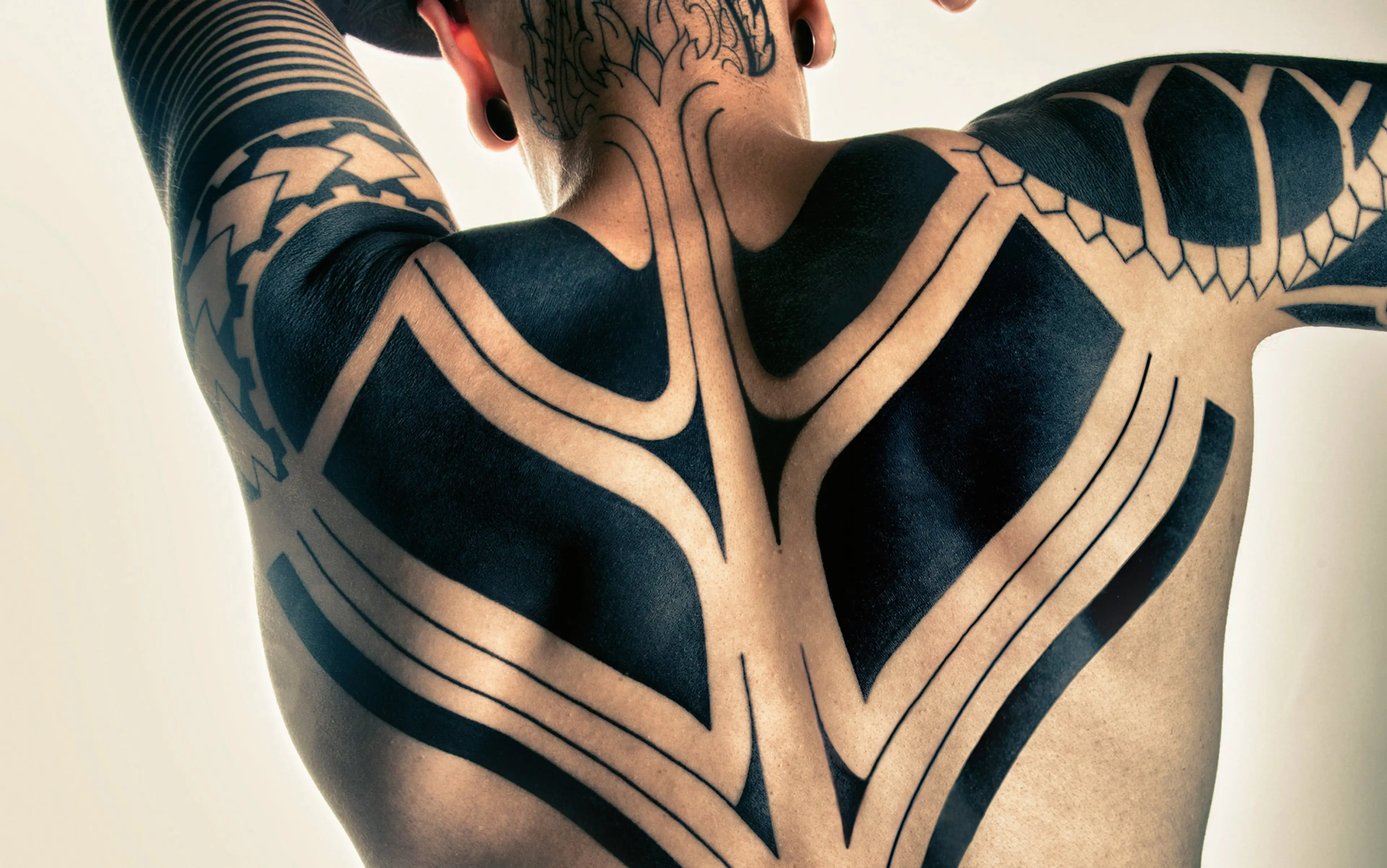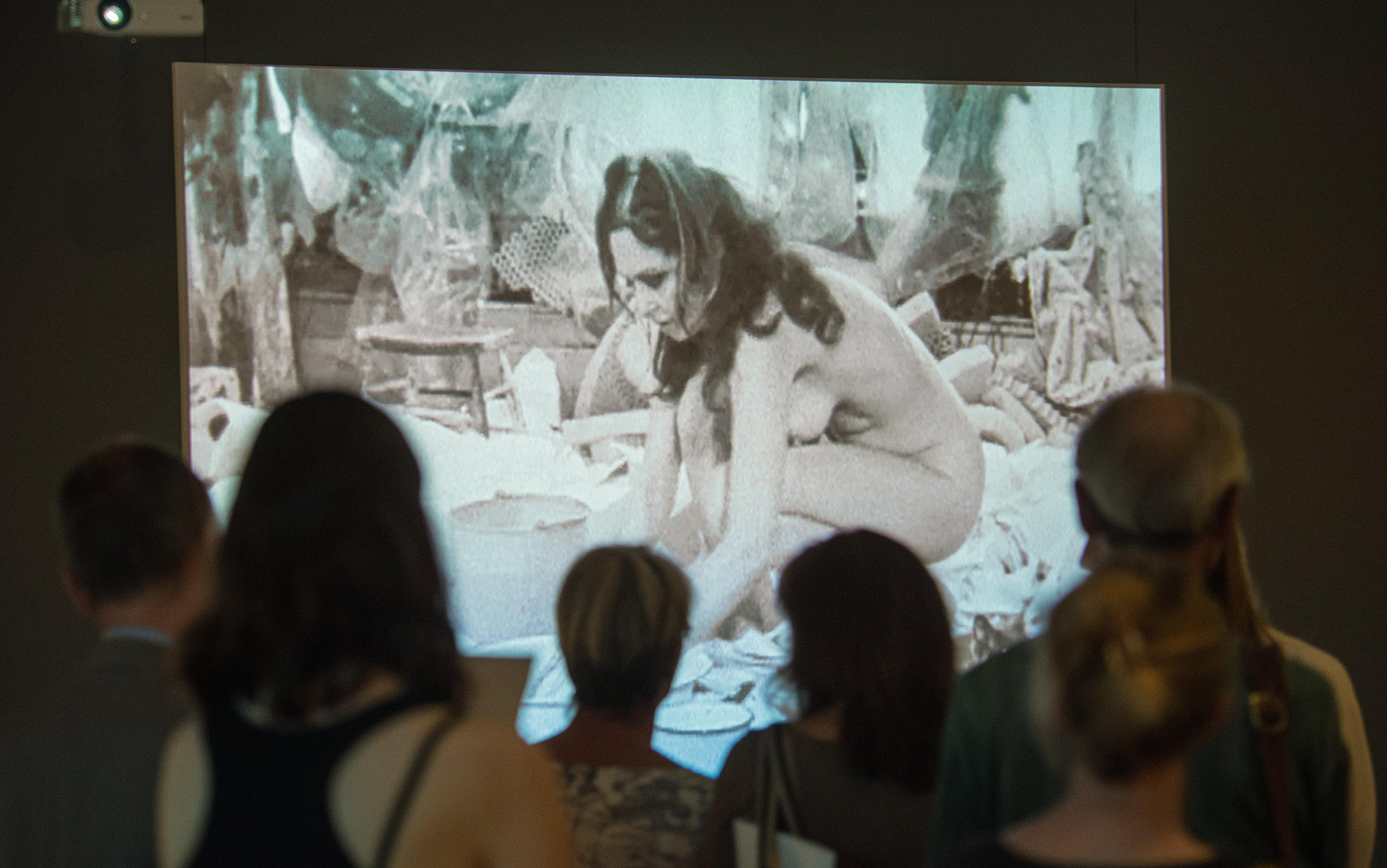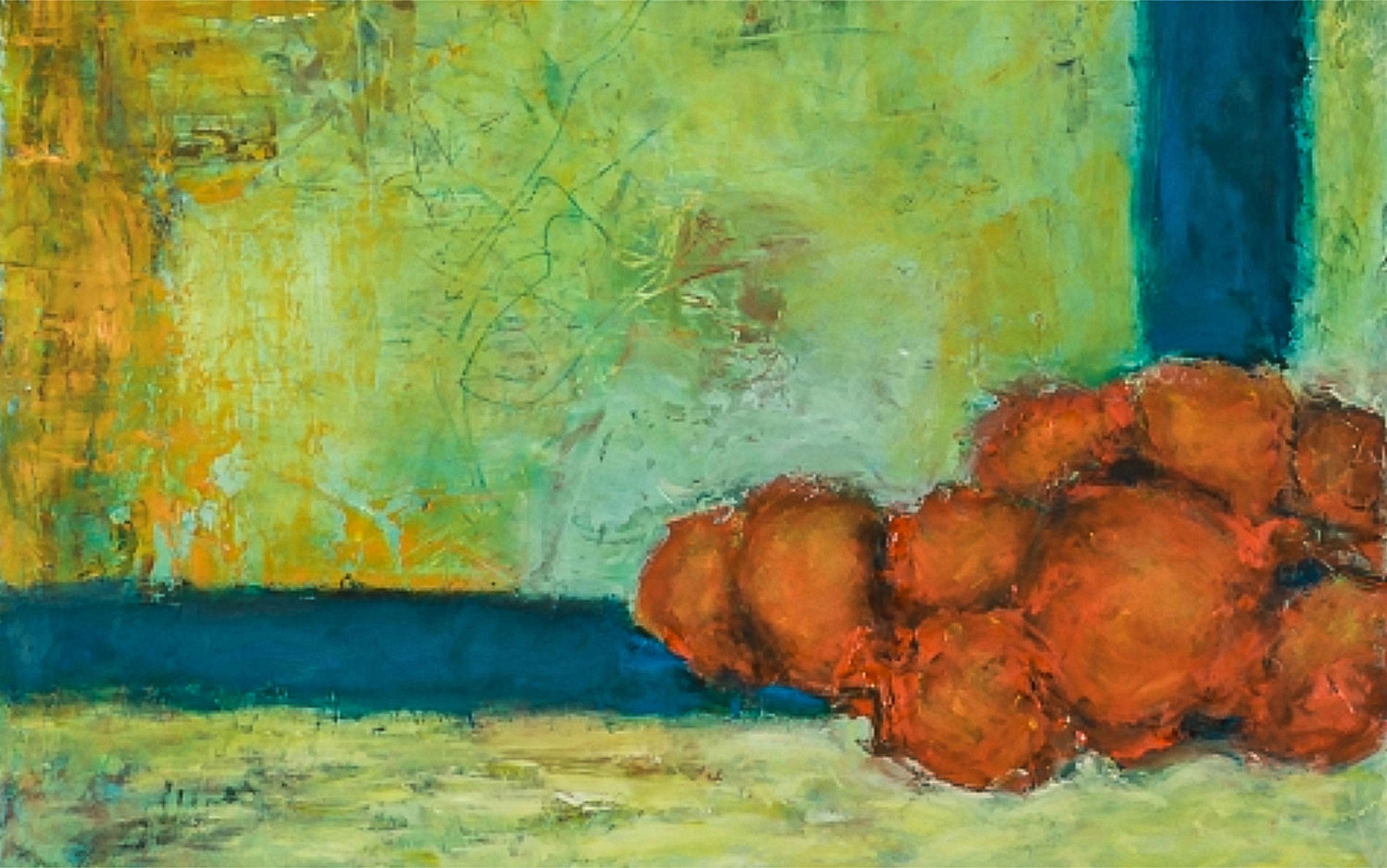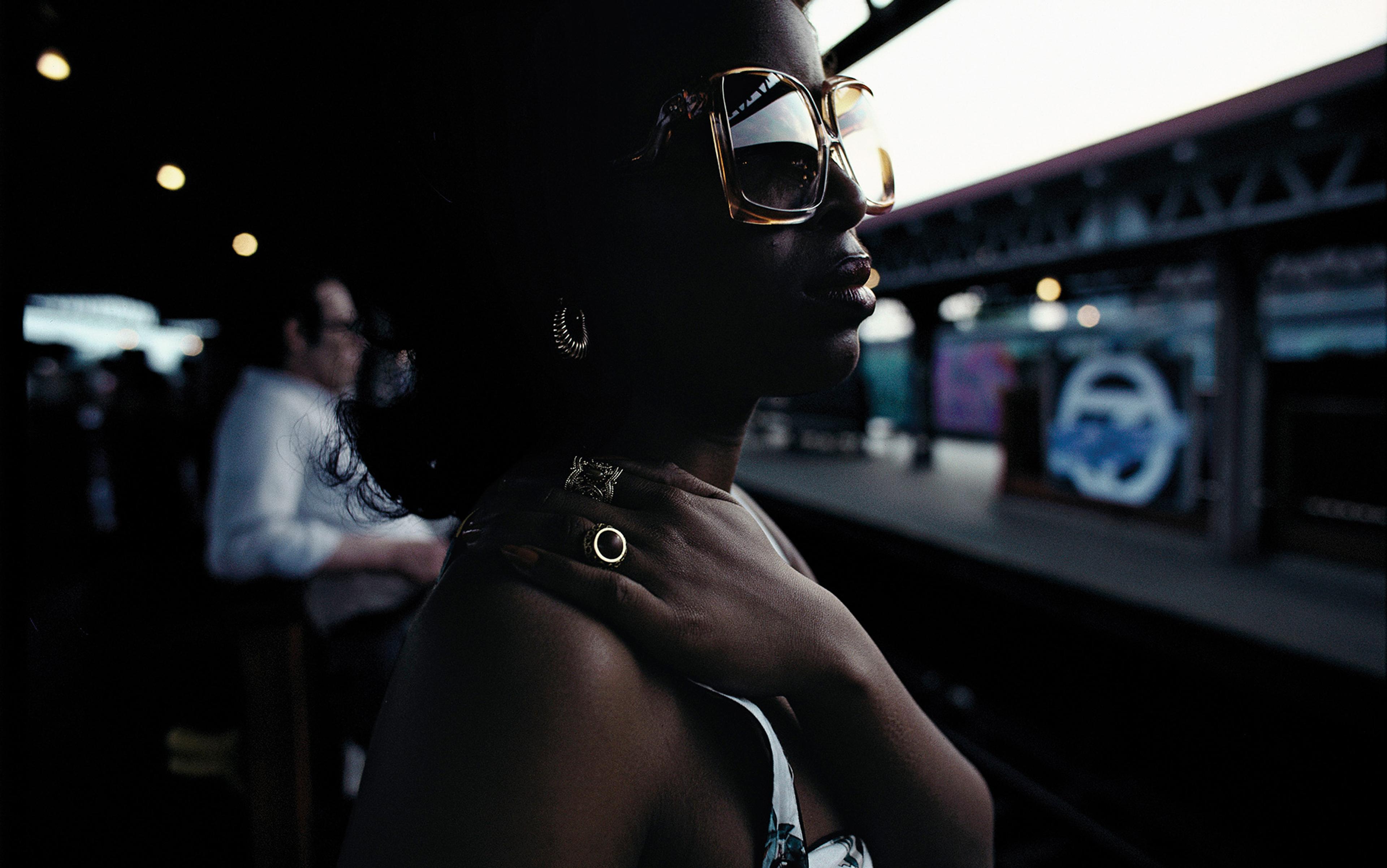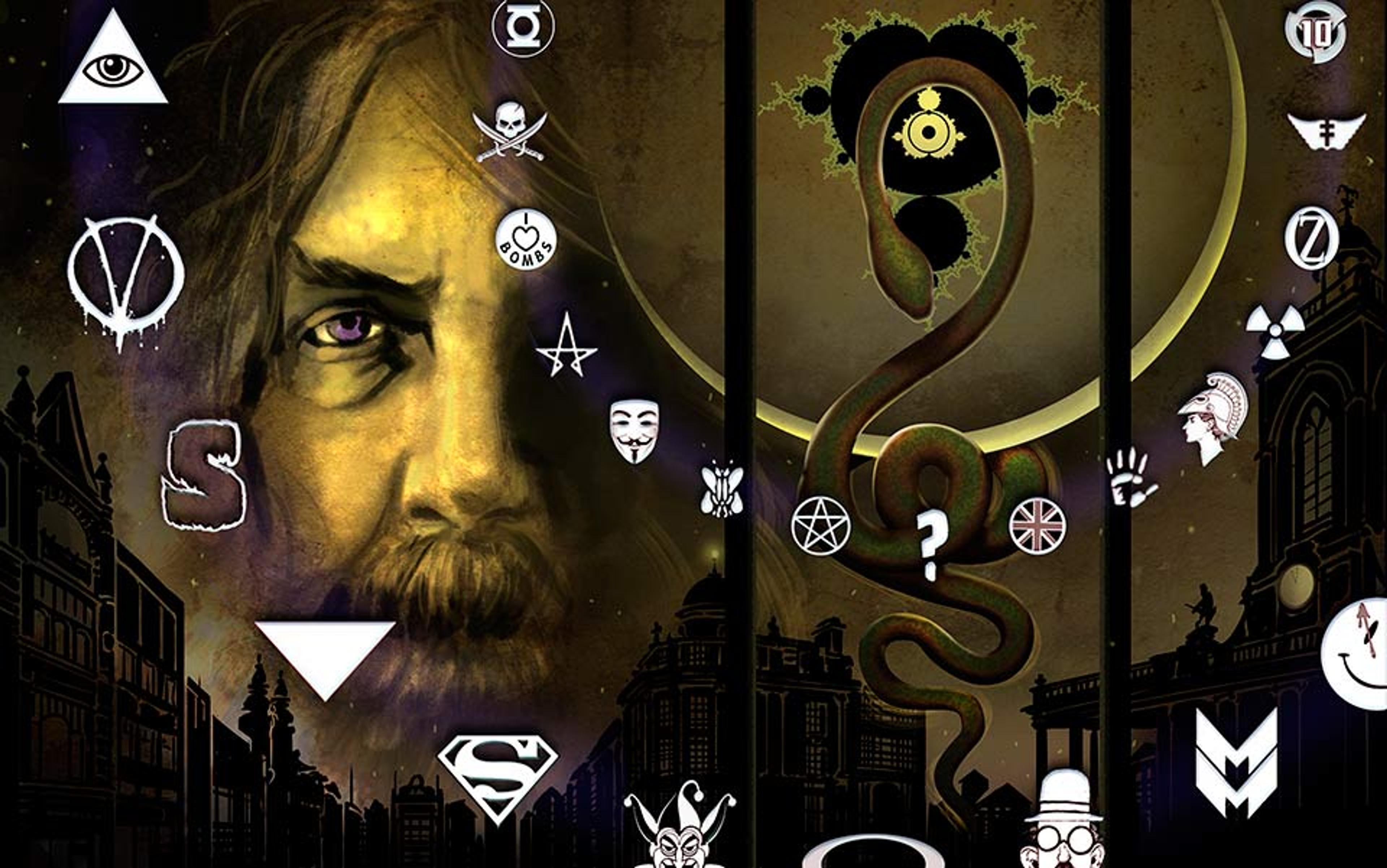‘I was a hooker — an art hooker — for most of my career,’ says Roxx, a tattooist in San Francisco. ‘I’d listen to what people wanted and I would do their things.’ When she suggested her own ideas, many declined — only to return later to confess their regret.
Today, no one tells Roxx what to do. Her clients come for a consultation in which she explores who they are and what they want their tattoo to say about them. They tell her where they want the piece and which of her other tattoos appeals to them. She takes notes and shoots photos. Unlike most tattooists, she uses no reference materials or stencils. ‘I just need to feel their energy and ask: “What would suit you? Do you want it to be warrior-like? Badass? Pretty and feminine?”’ A design takes shape, she draws it on freehand, and the work begins. ‘It’s nothing spiritual or philosophical,’ she says. When I ask her what she would create for me based on a half-hour of conversation, she exclaims: ‘I was just doing it!’ And her prescription is perfect, though I haven’t come for a tattoo.
We are in 2Spirit Tattoo, her shop on Pearl Street, where she has made her name as one of the most sophisticated and original tattooists in the world, working in a style — called ‘blackwork’ — that few women practice. Her studio is a sprawling open space with natural light, white walls, wood floors, brushed aluminium ceiling lamps, and black leather tattoo tables arranged at each of her four employees’ workstations. One wall near the glass-front entrance is covered in framed photos of her clients showing off their art: precise, geometric, all-black designs that follow the musculature of the body or fan out in lacy arcs between shoulder blades; boldly etched dharma wheels rolling across chests; honeycombed netting nicked from the Filipino Kalinga tradition and tailored like clothing on chests and arms; and in one photo, a simple trio of liquid lines pouring down a woman’s back and flowing around her waist.
Roxx’s workstation occupies a back corner of the shop that can be partitioned off with sliding doors. She sits on the edge of her chair, elbows on her knees, talking with increasing animation as the late morning coffee kicks in. Soothing electronica fills the space, softening the buzz of machines wielded by two artists, Michael Bennett and Matt Matik, who chat amiably with their prone clients. Two years ago when I interviewed her for my book Bodies of Subversion: A Secret History of Women and Tattoo, Roxx called her shop ‘San Francisco hippie’, but that merely describes the comfort level; there is nothing hippie about the refined aesthetic of this studio, or her elegant tattoos.
Whether you follow tattooing or not, you’ve probably seen a spate of recent articles announcing that it’s no longer the exclusive province of bikers and gangbangers — though it long predates both groups, and never really belonged to either. It’s true, however, that in the new millennium tattooing has landed squarely in mainstream Western culture and burrowed deep into the middle class, where it’s flourishing. Since the 1970s, when the Japanese influence opened the way to all manner of innovation, the colours have become richer, the technique is stronger, the range of styles and subjects is broader, and more people are wearing better executed, more interesting tattoos. But one thing hasn’t changed: tattooing is still generally a matter of putting pictures on skin — something Roxx will have no part of.
She is against using the body — a 3D form, a sculptural form — as if it were paper or canvas. The reason: horses. Roxx (née Roxanne) has loved horses since she was a child growing up in England who dreamed of becoming an equine veterinarian. ‘My Granny taught me to draw them when I was two,’ she says, and she has been riding for nearly as long. ‘I spent most of my childhood with horses — grooming them, touching them, running my hands down their legs and feeling their anatomy, and that’s how I learnt to draw them,’ she explains. ‘That’s all I drew as a kid, and all I cared to draw.’
Her sketches led to her interest in tattooing, first in London as a teen and a punk in the 1980s, then in Edinburgh and Amsterdam. Early on, when she tried to get a formal apprenticeship in London, she says: ‘People looked at me like I had horns growing out of my head — because I was a woman.’ (She is also a mixed-race lesbian of Persian, Dutch and German descent, which surely didn’t help in what was then a hetero-centric, white-dominated tattoo culture.) She went to Amsterdam because the tattoo consciousness was more evolved there. ‘The people in Amsterdam were educated about tattoos as an art form rather than some old historical, nasty, dirty trade,’ she says. She initially worked in a street shop doing flash designs — stock images pulled from a sheet — for people who lined up 100 deep every morning, pumped to get inked.
‘That was like tattoo university,’ she says. The non-stop work honed her technique and boosted her confidence. But the trite imagery nearly drove her to quit tattooing for good. ‘I worked for three years doing dolphins and rainbows and fuckin’ lions’ heads day in and day out, and I was like: “This isn’t being an artist; this is bollocks”.’
So Roxx opened her own studio, doing custom work and employing only female artists (something she won’t try again). In 2004 she followed her then-partner to San Francisco, where she founded 2Spirit, specialising in modern, monochromatic designs, all informed by the anatomical awareness she cultivated through studying horses.
‘I learnt to look at horses for their “conformation”,’ she says. These are the characteristics by which horses are judged against an equine ideal, for breeding and competition. The head, for example, according to WashingtonState University and the Department of Agriculture, ‘should be triangular when viewed from the side; should have large powerful jaws, and taper to the muzzle. The profile should be a straight or slightly dished face as opposed to an arched or Roman nose.’ Because of her interest in equine aesthetics, says Roxx: ‘I accidentally studied anatomy really hard-core.’
‘I don’t want to spend any more of my life doing art that makes my soul disappear’
Anatomy is one reason she insists on choosing designs for her clients. It’s not that Roxx doesn’t respect their wishes (‘I’m a people-pleaser’), it’s just that she knows better. ‘A lot of these people, even if they’re 2D artists, they have no idea how things work when it comes to the 3D form. We know what works on the body and what doesn’t. I think it’s changing now where people trust the artist to do their piece and they don’t want to get in the way of the artist’s process. It’s a really privileged, nice position to be in, but I’ve worked really hard to get there.’ And, she says: ‘I don’t want to spend any more of my life doing art that makes my soul disappear.’
Blackwork tattoo, as defined by Marisa Kakoulas in Black Tattoo Art 2 (2013), which features Roxx’s art, emerged in the late 1960s and became fashionable in the ’90s. ‘It is a contemporary tattooist’s interpretation of an art largely derived from Polynesian, Maori and Southeast Asian cultures — often blending together signature styles from different traditions,’ Kakoulas explains. In the 1980s, the iconic artist Leo Zulueta popularised blackwork by combining it with Old School imagery — hearts, flames, and skulls. He was the first to build his style on a bedrock of tribal elements.
‘The black graphic look has introduced an important option to modern tattooing,’ wrote the artist Ed Hardy in Art From the Heart (1991), ‘that of clarity, visibility, and an appreciation of abstract form for its own sake.’
Throughout most of the 20th century, Western tattooing was a closed system wedded to a static roster of folk forms that included anchors, hearts, pin-ups, skulls, devils, snakes, panthers, tigers, swallows, eagles, mermaids, Christs, crucifixes, ships, tombstones, horseshoes, and nautical stars. A wave of Japanese and Polynesian influences enriched it both formally and technically from the 1970s to the ’90s, and by the turn of the millennium a recombinant postmodernism had scrambled the lexicon, allowing for everything from Day of the Dead pin-ups to solid black Banksy reproductions. This is the era in which Roxx came of age as a tattooist. But it was the blackwork that grabbed her: its abstract motifs promised timeless designs, and its graphic simplicity allowed for customising it on the body.
‘I’ve never done anything authentic from another culture,’ says Roxx. ‘I went through years of tattooing Polynesian — Tahitian, Samoan — the Samoan pe’a [traditional tattoo] has influenced my entire career, [but] I warped it.’ Once she was fluent in these styles, she built and distilled her own image library informed by them. ‘It’s all down to lines and forms and curves now, and the simplicity of how you put them together. It’s back to graphic design.’ And it’s all stored in her head.
‘She’s like a conceptual artist,’ says Cats, her newest hire and mentee, a young British artist with a graduate degree in fine arts who has joined our conversation. ‘The process is entirely theoretical until it’s on the person’s body.’
Roxx has noticed that the more her clients know about art history, the more adventurous they are about getting the kind of high-concept tattoos she delivers. More than half are men, and none, she says, are hipsters, though the clients in her shop today look pretty hip. Most of her clients are in their 20s and 30s; others, she says, come when they’re going through a break-up at 40 or 50. Many hail from the corporate world, including Google and Visa. She has tattooed a personal trainer, a law student, the chef Mourad Lahlou, the musician DJ Ooah, the well-known East Coast tattooists Trevor Marshall and Thomas Hooper, and tomorrow she is scheduled to tattoo a Danish tattooist who will fly in just for the occasion. Her next available appointment is in 2015.
When Roxx takes a break from our interview to smoke outside, she returns with a client who happened to be walking past her shop. A slight, fair, wholesome-looking software development manager for a major company, she agrees to sit down and talk about her work, but doesn’t want her name revealed.
‘My first tattoo was a milestone,’ she says, running her hands up and down her stunning full sleeves, and showing me how the tattoos follow the arc of her muscles, even under the arm. ‘I grew up in a family that looked good from the outside, but inside there was a lot of chaos and physical violence, and my body was not my own until I was able to physically get out. I started getting tattooed. It was a way of slowly reclaiming my body. I look a certain way — a lot of people make assumptions. [And] I work for [a company] that’s very conservative. I needed a way to express myself in a way that felt more authentic to who I am and how I grew up and how I am today.’
‘People who are survivors of abuse have that issue of [not knowing] where anything is from here down,’ Roxx says, touching her neck. ‘Putting the mark on there is like reclaiming it.’
‘She’s a therapist,’ the client says laughing, gathering herself up to leave and finish her errands. ‘We should pay her for therapy.’
‘It’s not like my clients are all wounded warriors,’ Roxx continues, ‘but inevitably, no matter how healthy their lives have been, once they get on the table… [they start to talk]. ‘They feel safe telling me.’ That includes LGBTQ clients who might not feel comfortable in more conventional shops.
Though some tattooists discourage this kind of psychological entanglement with clients, Roxx considers it part of the process. Her shop name, 2Spirit, refers not only to her own gender ambiguity (‘People often describe me as this kind of magical shamanistic creature that’s neither masculine nor feminine,’ she says), but also to the collaborative nature of tattooing: ‘It really does take two people to work together to make really great tattoos.’ A number of her uniformly ecstatic Yelp reviewers address this point specifically. ‘She took the time to understand who I was, my background, my heritage, what’s important to me,’ reads one post. ‘She made it clear that we could go through as much iteration as I wanted until we came up with the perfect design.’
Last October, Roxx created a different kind of therapeutic tattoo at an inaugural event called P.Ink Day, during which 10 women tattooists tattooed 10 female breast cancer survivors scarred by their surgery or reconstruction. P.Ink Day was sponsored by the renowned tattoo shop Saved Tattoo, in Brooklyn.
‘This was huge,’ says Roxx. ‘These women were like war-torn veterans. Some of these women had entire pieces of their ribs carved out to get the cancer out. It’s not like a regular person coming in with a fresh body that has been traumatised getting a tattoo. This place is so hurt and damaged and gouged and squished and cut and sewn — and now to put a fucking tattoo over the top — seriously.’
Roxx worked on a survivor who’d been diagnosed at 27, whose request was unusual on two counts: first, she didn’t want both breasts tattooed because she had no confidence she would keep the natural one. Second, she didn’t want her scar covered by the tattoo. After a 10-minute consultation, Roxx drew on and tattooed the design — a masterpiece of symmetry and simplicity applied freehand in two and a half hours. The swirling piece follows the curve of the left breast and cradles it, flowing from the left shoulder around and under the right side until the jagged scar brazenly interrupts it.
‘I looked at the flow on her chest. This was like her flow of life, and where the scar cuts in it’s like this break where this happened, but then life continues’
‘She said she wanted something that mildly resembled a dove because she had this loving connotation with doves and her grandma,’ says Roxx, ‘and that’s what came out. To me it’s a little bit like a dove’s wing. And I looked at the flow on her chest. This was like her flow of life, and where the scar cuts in it’s like this break where this happened, but then life continues. She was over the moon.’
One of the remarkable things about Roxx’s work is her expressive use of negative space — usually through bare skin; sometimes through swaths of solid black. The flesh itself is an absent presence, and her art sings because she knows when to stop and let the ‘silence’ hum. As she told Inked magazine in February 2013: ‘I am always trying to make a million micro-calculations as I work, deciding what is enhancing the body and what is hiding the form underneath. I try to find a balance in between both — between adorning the body yet not covering up.’
Roxx is vigilant about keeping her vision pure: she doesn’t look at the work of many tattooists. She doesn’t read tattoo magazines because she finds their sexism tiresome and the work in them conceptually uninspired, but she is interested in design and architecture magazines. She hasn’t mentioned a single fine artist during the course of our conversation, and there is no art on the walls of her carefully curated shop, beside sample portraits of her clients. She has been inspired by the work of the Californian icon Ed Hardy, the Swiss tattooist Filip Leu, the Filipino-American Leo Zulueta, and the (late) Samoan Paulo Sulu’ape.
As an artist with no formal training — either in the fine arts or as an apprentice to an established tattooist, which is how novices traditionally get their starts — Roxx is an aesthetic magpie. Her visual appetite ranges across disciplines: indigenous art, street art, natural forms, anatomy, and graphic design. ‘I like looking at the shapes of nature, like leaves; I like looking at shadows,’ she says. ‘And women.’ She enjoys watching the musculature of her dogs at play. And above all, she loves black Friesian horses.
The horses explain not only what led her to tattooing, but also its ongoing physical and ritual appeal. The discipline, control, nurturance and trust involved in riding and grooming them reverberates in her collaborative relationship with her clients. And the physical and erotic power associated with them is something she strives to release through her tattoos. I’ve examined many photos of Roxx’s work in an effort to determine whether she shoots only people who are fit and sexy, or whether her arty photos create this impression, or whether the tattoos themselves are responsible for it. But after following her Facebook posts chronicling her work over the course of months, then seeing it in person, I understand that the tattoos themselves, through their holistic, body-hugging dynamism, produce this effect. ‘Bodies are really sexy,’ she says. ‘I like making [them] look beautiful and powerful.’
Many contemporary tattooists would like their work to be recognised as fine art; they want, understandably, to see tattooing transcend its folk heritage and command respect for it is aesthetic sophistication, as well as for the immense technical challenges involved in drawing clean lines and readable imagery on an irregular, permeable, pigmented surface. Roxx is less interested in the isolated masterpiece than in the client’s living — and ageing — body. She says: ‘I want it to look as stylish and as classy on them now as it will when they’re 80.’ Because, she adds: ‘What is this canvas that we’re decorating — is it just some piece of paper? No, it’s your temple. It’s quite precious. It’s not just a piece of skin.’
Editor’s note: 2Spirit Tattoos is no longer located in San Francisco, and is now based in Los Angeles.
